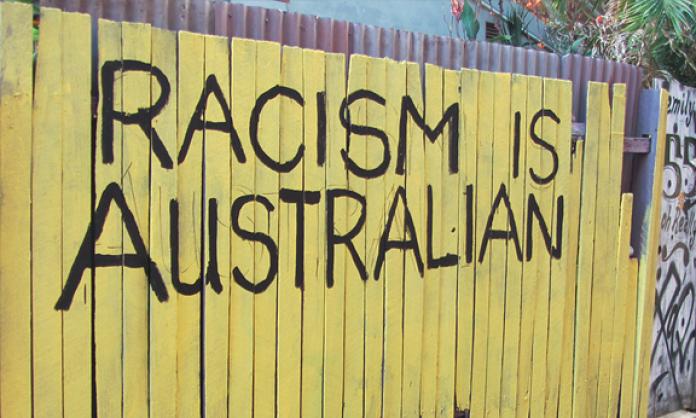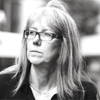“Is Australia racist?” A good question, and also the title of the first show in SBS’s “Face Up to Racism” week at the end of February. The answer is a resounding yes.
In addition to the original anti-Aboriginal racism, Australian racism has at various times also brutalised, impoverished and excluded Chinese, South Sea Islanders, Irish, Germans, Jews, Japanese, Southern Europeans, Muslims and refugees.
We are not talking only about a racist past. Researchers at the University of Western Sydney recently completed the most comprehensive survey about racism in Australia. One in five people experienced racism in the past 12 months. Of Muslim women, 77 percent experienced racism on public transport or in the street. Sixty-five percent of Indigenous people had been abused or otherwise disrespected on racial grounds.
Ten percent of those surveyed admit to holding “racist views”. Specific attitudes are even worse: 43 percent admit to anti-African sentiment and 32 percent hold negative views towards Muslims.
Racism clearly permeates our society. But, while much attention is placed on the acts of individual racists, the constant reproduction of racism doesn’t come primarily from the stereotypical “uneducated bigot”, but from the ruling class and its well-educated middle class propagandists in the media. They have an interest in spreading it.
Racism is not fundamentally about individual behaviour – although often that’s how people experience it. It has been built into the institutions of Australian capitalism from its origins in invasion, dispossession and genocide against the Indigenous population.
For example, even if by some miracle every individual racist changed their views, the major forms of racist disadvantage that Aboriginal people experience – from appallingly low life expectancy to the worst housing, education, ill health, joblessness and access to government services – would go on. Nor would the extra attention that they receive from government – the murderous police, jails, courts and child removal departments – disappear.
Divide and rule
Racism is central to capitalism because the system benefits from it.
Sometimes the benefits to profits are clear, as with the original theft of Aboriginal land during the foundation of Australian capitalism, or former PM Tony Abbott’s denigration of “remote” Aboriginal communities as “a lifestyle choice” in order to give more access to their land to future mining ventures. Racism against “foreign” workers helps the bosses get away with giving them worse wages and working conditions.
But racism’s usefulness to capitalism is broader than this. If thousands of asylum seekers can be imprisoned indefinitely without charge, it makes it easier to target the rights of construction workers and their unions, who stand up to profit-hungry bosses. If it’s permissible to brutalise refugee children, it makes it easier to strip the disabled of benefits. The persecution of Muslims and refugees is a means to justify the strengthening of the repressive apparatus of the Australian state, to crush any sense of social solidarity and to distract workers from the broader government agenda – the redistribution of wealth from the working class to the capitalists.
It’s a process of divide and rule, made necessary by the highly unequal and undemocratic nature of capitalism. Establishing divisions within the working class is fundamental to ruling class attempts to keep control over a society in which they constitute only a tiny minority, making their profits from the labour of the majority. Constructing an enemy is also important for prosecuting imperialist wars. This also explains why the targets of Australian racism have shifted over the decades depending on the needs of the ruling class at the time.
For example, in 1998 only 3 percent of Australians considered Muslims a problem, while 45 percent thought people from Indochina were. Today, the target has shifted.
It’s not that millions of people suddenly got bored with anti-Asian bigotry and spontaneously decided to hate Muslims instead. Muslims and Arabs internationally have been at the centre of a sustained racist offensive, combining waves of repressive “anti-terrorism” legislation with abuse by senior politicians and the media.
This Islamophobic offensive from those in control of society has generated the surge in racist attacks on Muslims on the streets, on public transport and in schools, including most notoriously the media-fuelled riot targeting anyone “of Middle Eastern appearance” in Cronulla in 2005.
Despite all this, people do not just go along with the racist garbage that confronts us day in and day out. When, on the assumption that mass sporting events would be hotbeds of racism, the producers of “Is Australia racist?” sent Ugandan-born Melbourne activist Jafri Katagar to hold up an anti-racist sign at the approaches to an AFL football game, the response of spectators was immensely positive.
It is not an accident that the high points of anti-racist struggle in Australia have coincided with the upsurges in class struggle in which workers most clearly see that the bosses are their real enemies, and conversely that racism only undermines that struggle. After all, the working class is multi-racial and multi-ethnic – our strength is in our unity.









